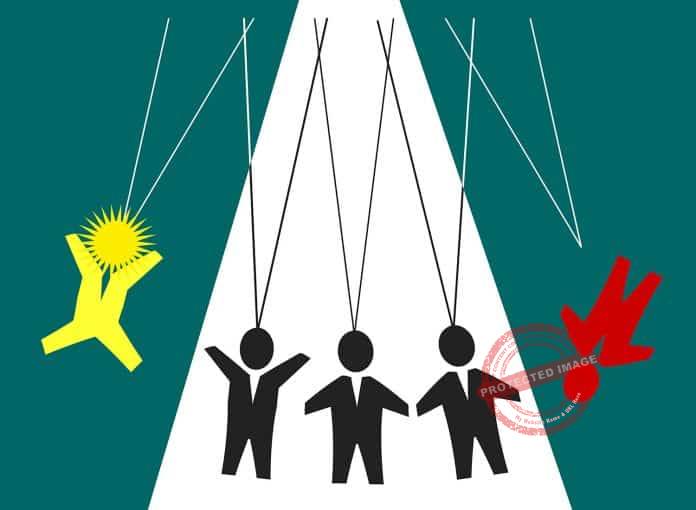The subject of employee turnover and how to reduce it is one on the minds of every business owner.
Every year, statistics show that many businesses suffer from a high rate of employee turnover.
This should be a concern for every employer who is committed to running a successful business.
The reason for this is not far-fetched.
Your employees are very integral to the success or failure of your establishment.
Many times, we’ve heard stories of organizations that owe their success to the hard work and devotion of employees.
When you hire the right people for your business, there is really no limit to what you can achieve.
Hence, it is expedient that you as a business owner make employee retention a priority and reduce turnover.
Additionally, it is necessary to reduce employee turnover because of the impact it has on the business financially.
The cost of recruiting employees, from the hiring stage to training and onboarding is quite high.
Therefore, having people work for you for a short while and then replacing them is not something favorable for your business.
The cost you would incur can be used for other valuable and profitable projects in your organization.
These and many more are reasons why it must be the priority of you as an employer to reduce employee turnover.
We would discuss those reasons in detail as you read this article.
And also, we will consider what practical steps you can take to reduce employee turnover.
In the meantime, let us begin with a definition of what employee turnover is and how to determine the rate in your organization.
What is Employee Turnover?
Employee turnover can be defined as the number of employees that leave a company within a specified period of time.
The act of replacing the employee(s) that left with new ones is what is termed turnover.
There are many reasons why this might be the case.
For one thing, the employee(s) might be asked to leave, which is the termination of employment.
This might result from the individual not being a good fit for the organization.
It might also be due to poor performance from the employee.
Another reason why there could be employee turnover is if the employee decides to leave of his/her own volition.
This could also result from the individual getting a better job offer, or not satisfied with your company.
Employee turnover can also result from an employee’s retirement from the organization.
Additionally, you might have employees leaving your organization as a consequence of a transfer to another agency.
Whatever the reason, the concept of employee turnover is to know how many employees you lose within a specified time period.
How to Measure Employee Turnover
The rate of employee turnover in your company can be measured or calculated with a simple effective formula.
This rate can either be calculated monthly for a short-term scope or yearly for the long-term picture.
The monthly employee turnover rate (METR) can be calculated thus:
METR = (Number of Employees who Left Within the Month / Average Number of Employees at Month End ) * 100
You can get the average number of employees by adding the number of employees at the start of the month to the number at the end of the month and dividing the sum by 2.
The formula above will give you your rate of employee turnover of that month in percentage.
The annual employee turnover rate (AETR) can be calculated thus:
AETR= (Number of Employees who Left Within the Year / Average Number of Employees at Year-End) * 100
As with the monthly rate calculation, you can also get the average number of employees by adding the number at the start of the year to the one at the end of the year and dividing the sum by 2.
You have the decision to make as to what will be the frequency of your employee turnover measurement.
However, it is worth noting that many organizations actually prefer the annual rate because it offers a wider spectrum to work with.
There is a consensus that your employee turnover rate should be less than 10% to be considered a success.
Anything less than that would be termed a high rate of employee turnover, and you will need to reduce it.
Additionally, you should be interested in knowing what particular category of your employees is leaving.
This can also be assessed during your turnover rate analysis.
Other Analysis you Need to Make on Employee Turnover
Aside from the employee turnover rate calculation, there are other analyses you need to make.
It would be nice to consider the reason why your employees are leaving, as this is a first step towards reducing it.
You might make it a practice to provide a parting survey form to an employee who resigns to know why they are leaving.
Many are more than willing to give this feedback.
Also, you will want to find out which employees are leaving.
Are they mostly from a particular department? Are they newly employed staff or old-time employees?
The answers to these questions would also reveal a lot as to why your employee turnover rate is on the high and how to reduce it.
Lastly, you would also need to consider if there is a pattern in the time they usually leave.
Could it be that the problem is with your onboarding process if they are fond of leaving just after they are hired?
Or if they leave after working for you for a long time, then could it indicate a lack of satisfaction and engagement?
Careful consideration of all these is also essential in the measurement of employee turnover rate.
Why It is Important to Reduce Employee Turnover
At some business point, your organization would have to deal with employee turnover.
This might be voluntary, in that they decide to leave your business.
It could also be involuntary, which is the case when you have to fire or terminate an employee’s contract.
The latter might be for the best though, as it is most times borne out of the incompetence of the employee and a need for better.
Whichever case it is though, the employee turnover rate for your company shouldn’t be on the high side.
If anything, you should actually be working hard to ensure you reduce it to the barest minimum.
Find below some negative impacts of employee turnover and why it is important to reduce the rate:
Employee Turnover Costs Money; A Lot of It
Whichever way you look at it, losing employees and needing to replace them is very expensive.
First, when the employee leaves, you incur exit costs as an organization.
Secondly, it also costs a whole lot to plan recruitment, post vacancy announcements, conduct assessments, and even train new staff.
Also, you need to consider the cost attached to eventual mishaps coming from losing the best employees and leaving the job in the hand of novices.
That means on every angle you view it from, there is always a lot spent when you lose employees, especially the top talents.
For a business running on a tight budget with many other important projects, there is no money to throw around.
Spending a lot on staff replacement is not worth it.
Employee Turnover Reduces Productivity
Employees are always there to fill a void and to perform allotted duties and tasks.
When you lose employees, the process of replacing them isn’t actually as easy as it might sound.
Some recruitment procedures can take weeks or even months to finalize.
This is especially so if you are looking for the best employees to hire.
Hence, during the waiting time before getting a replacement, who performs the duties of the employee(s) who left?
The job will definitely not do itself.
You might want to task other employees with combining their duties with the ones begging to be done.
However, there is just an extent to which they can also keep up.
And eventually, the productivity of your employees and job performance would drop.
High Employee Turnover Leads to Low Employee Morale
Another direct effect of a high rate of employee turnover on your workforce is a drop in their morale.
Your employee morale is the motivation and passion they have performing their duties and working for your organization.
This is the fertilizer for employee engagement and job satisfaction.
So, how then does employee turnover affect this?
When you lose employees, the pressure is on the remaining members of your team to fill the gap.
At least, until you find a suitable replacement for the employee who left.
This means that your remaining employees would be working extra hours and have an additional workload.
The effect of this on the employees is that it drains them and saps their energy, joy, and satisfaction.
Before long, the morale of these employees would also drop and they might be looking to leave as well.
Employee Turnover Can Lead to Loss of Customers
A careful study of customer behavior reveals that customers love doing business with the people they are comfortable with.
It helps your customer retention if you have employees that are popular faces around the organization.
Customers tend to build a special relationship with these and always look forward to having those employees attend to them.
However, if you lose employees regularly, it might disturb this relationship.
As a matter of fact, you might have some of your customers leaving your business when they find it difficult to start building a relationship all over again.
In a similar vein, some employees might be the ones who brought in some customers for your business.
They might be patronizing you out of loyalty to these employees.
Hence, when those leave, they might also be taking the customers with them, deliberately or unwittingly.
Employee Turnover Affects Business Stability
If you want a stable business in terms of processes and systems, then you should reduce employee turnover.
Your employees who have stayed with you the longest understand your structure, processes, and system very well.
With the years of service comes a wealth of experience.
They also have the reservoir of knowledge about your organization which they can impart to the new staff.
Therefore, when you lose these, especially those in senior positions, it can upset your business stability.
Your processes might start becoming inconsistent, as the new employees try to learn the ropes.
You will also lose an element of leadership that those who have served you for many years bring with them.
High Employee Turnover Gives you a Bad Brand Image and Reputation
Whether you have a higher voluntary employee turnover or the involuntary, they both affect your brand reputation.
Let’s face it, no serious person wants to work for an organization where employees don’t stay for long.
You might start having the reputation of the organization that hires to fire, or a place where it is difficult to work.
And when this happens, your power to attract the best employees to work with you will reduce.
This is because these want stability and a place to develop and you cannot give them that.
What Causes a High Rate of Employee Turnover
You might be putting in your best as a business owner and still find that your employee turnover is increasing.
If this should happen, there are certain factors you are not readily giving attention to which is responsible for this.
Here are some identified causes of a high rate of employee turnover, which avoiding them can help you reduce turnover:
Poor Recruitment Process/Strategy
High employee turnover begins right from the recruitment or hiring stage.
Sometimes, you are forced to terminate employee’s contracts when they are not suitable for your organization.
It could be that they do not have the necessary skills or work ethic to remain with you.
Where it all went wrong was from the recruitment process.
If your recruitment strategy is not well-positioned to identify the best talents, you run the risk of losing employees often.
Dissatisfaction with Job
Another reason why employees generally leave their jobs is when they are dissatisfied with them.
Employee satisfaction comes from a variety of things, ranging from communication to engagement and recognition.
If these things are not present in your organization, you run the risk of losing employees.
Because they do not get the job satisfaction they so desire.
A Lack of Opportunity for Growth
Employees are also most likely going to stay in an organization that affords them the opportunity for personal growth.
When you are not providing such opportunities and not supporting their efforts at personal growth, they get frustrated.
And this can in turn lead to the loss of employees.
Bad Leadership
A high percentage of employees who leave their jobs would say they did that because of the employer or management.
When your leadership skills leave a lot to be desired, it can be a massive turn-off for your employees.
Some of the traits characterizing bad leadership would include; being rude to employees, or exhibiting pride and arrogance.
If your employees are not comfortable working with you and for you, they will leave.
No Work-Life Balance
In a bid to increase productivity and also make more money, some employers resort to overworking employees.
While at this, they provide little or no opportunity for these employees to enjoy life outside of work.
When this is done, it causes stress for your employees and can make them frustrated with your organization.
And that is also another reason you might be losing employees.
Micromanaging Employees
One other cause of a high rate of employee turnover is the micromanagement of employees.
Micromanaging employees simply means wanting to have full control over everything your employees do.
When you micromanage, you do not give the employees the liberty of making their own decisions or being innovative.
As a result, they might feel a lack of trust in them, and this can affect them negatively and causes a high turnover.
How to Reduce Employee Turnover – 10 Simple and Effective Strategies
The negative effects of having a high rate of employee turnover are very clear as we’ve seen.
If you make an analysis of this and find your organization experiencing it, then it’s time to spring into action.
Rather, you do not even have to wait to suffer employee turnover before you take necessary action to prevent it.
The strategies we will discuss below will work both for preventing employee turnover, and also reducing it if already skyrocketing.
Get Your Recruitment Right
The key to reducing employee turnover begins with the recruitment stage.
As earlier mentioned, one of the reasons why you might need to let go of employees is when they are not right for you and your organization.
This might be because after hiring them, you discovered that they do not have the needed expertise for the job.
It could also be that their personality doesn’t resonate with the company’s culture.
If efforts to correct these prove abortive, you might be left with no option but to let them go.
On the other hand, a poorly fit employee might also decide to resign from the job borne out of frustration.
When they discover that they do not belong to that place, their morale will drop and so will their enthusiasm.
And sooner or later, they might decide that they need another opportunity elsewhere.
All these can be avoided by having a good system for recruitment that targets the right people for your organization.
If you get it right at this first stage, you are already reducing the chance of turnover by a huge percentage.
Fit Employees in the Right Position
Even when you hire the best talents, you might also run the risk of turnover if they are not properly fitted.
What does this mean?
Your individual employees are unique in their abilities, skills, talents, and expertise.
Sometimes, the reason some employees leave their jobs is that they are not been utilized properly.
If you place the right employee in the wrong position, you are 100% not going to get results.
While this affects your company’s revenue generation, it also affects the employee personally.
This is because when things are not working out as expected, they get frustrated and demoralized.
And one of two things is likely going to happen.
It’s either you end up firing them for lack of productivity, or they leave the firm to gain personal fulfillment.
Maintain Open Communication
One factor that helps reduce employee turnover but is easily overlooked is active and constant communication.
Some employees complain that those in management positions in their organizations do not communicate with them.
Communication is important because it gives your employees a sense of belonging and assures them of their value.
As an employer who is looking to reduce employee turnover, you need to keep the lines of communication open.
It helps to know what your employees are going through, discuss their challenges with work and offer practical solutions.
When you are seen as a leader who is always ready and willing to listen, they feel closer to you and are more likely to stay with you.
Practice Employee Recognition, Benefits, and Rewards
Recognizing and rewarding employees for their contributions and achievements is a strong factor that helps reduce turnover.
As they give their best in their jobs, employees want to know that they are valued for this.
You can start recognition with simple words of appreciation for your employees.
A simple “Thank you for the great job you did with…” will go a long way in encouraging your employees.
Also, you can offer special rewards or compensations for exceptional employees.
This will increase their loyalty to your organization and effectively reduce turnover.
Provide a Platform for Employee Personal Development
Employees are more likely to stay with organizations that provide them opportunities for personal growth.
You shouldn’t just give your employees the notion that you are only concerned about the success of your company.
It is important that you also assure them that their personal growth and success matters to you.
Hence, when they want to take actions that will improve them, you should give them your full support.
You can also send them for training or courses that are meant to sharpen their skills.
When you invest in your employees these ways, they give you back loyalty and you can reduce the rate of turnover.
Empower your Employees
It might sound counterintuitive but your employees actually want to be given additional responsibilities.
Or let’s put it this way; the best employees are always looking for more responsibilities to contribute to their organization.
They are not just satisfied with doing their job and going home.
These have an abiding interest in being a massive part of the success of the firm.
Employee empowerment would also involve allowing your employees the liberty of making certain decisions on their own.
It means you do not micromanage employees, but afford them a level of trust as they earn it.
When you do this, it can help in reducing the rate of employee turnover.
Don’t Overwork Employees; Encourage Work-Life Balance
Overworking employees has its own many disadvantages.
Not only does it stress out your workforce, but it also adversely reduce their level of productivity eventually.
With that in mind, you must encourage a good work-life balance in your firm.
One way you can do this is by not encouraging regular overtime unless necessary.
Also, provide opportunities for lunch breaks for your employees, and encourage them to take them.
Additionally, you can arrange social gatherings for your employees, as a time to relax and cool off outside work.
This can increase employees’ happiness and morale and will reduce the turnover rate.
Be Flexible With Work Schedules
Another thing employees appreciate very much is a flexible work schedule.
If possible and applicable to your industry and work scope, you can allow your employees a measure of flexibility in the place they want to work and when to work.
This means allowing them to dictate their work hours and also letting them work at home sometimes.
It serves as another means of improving a good work-life balance, and employees benefit from this.
They can work at their most productive hours, and also still have time to spend with family and friends.
This would generally improve their experience and would also help reduce employee turnover.
Promote a Healthy Work Culture
Employees also leave their job to protect their mental health.
To increase the chances of retaining employees and reducing turnover, you need to create a happy, comfortable and healthy work environment.
Your employees need to have a team spirit and relate well with one another.
When the work culture and environment foster unity and not frictions and conflicts, employees are more eager to work in such a place.
Provide the Needed Infrastructure, Tools, and Resources
You can make employees enjoy their job and make it easier when you provide the necessary resources and infrastructures.
Sticking to the archaic methods of doing things, or outdated systems and tools won’t make your employees work smarter.
It might just make them work harder and grow frustrated.
On the other hand, with the right infrastructure and support in terms of tools and resources, you can reduce the employees turnover rate.
Pay your Employees What They are Worth
You will probably hear many people say that money cannot make your employees stay, and we agree with that.
However, it is an incentive towards employee satisfaction which in turn would reduce turnover.
It would be in your best interests to offer competitive pay to your employees and give them the worth of the value they bring to the table.
The reason being that if you don’t, there are lots of competitors out there that would be willing to.
And you might suffer employee turnover if you make paying employees below their worth a habit.
Final Thoughts on How to Reduce Employee Turnover
There are many factors responsible for increased employee turnover.
Some of these factors are those you have little control over.
Most of them though can be controlled by the measures and strategies you put in place.









